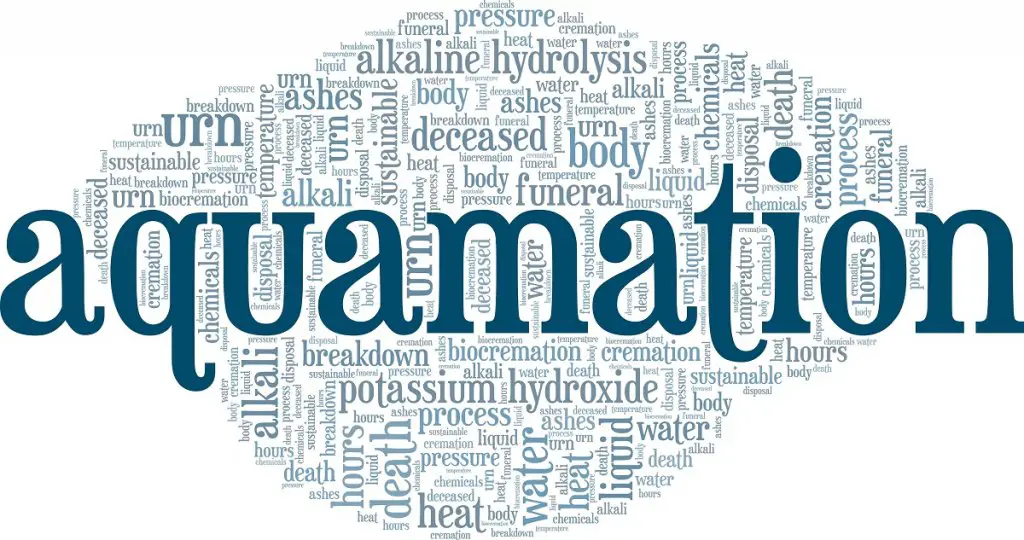Water cremation, also known as alkaline hydrolysis, biocremation, or green cremation, is the process of cremating a body using water, alkaline chemicals, heat, and sometimes pressure. This cremation process is viewed as a gentler process and can often use a less carbon footprint than traditional cremation.
In recent years, more people have been choosing cremation over traditional burial as their preferred method of final disposition. Aside from flame-based cremation that most people know, water cremation is another alternative touted as a greener funeral option.
According to a report by the National Funeral Directors Association (NFDA), about 79% of people will opt to be cremated by 2040. Some factors behind the rising popularity of cremation are cost, decreased affinity to religious restrictions, and increasing eco-consciousness.
If you are making funeral arrangements for a loved one who wants to be cremated, you have more options to consider today.

Table of Contents
What Is Water Cremation?
Water cremation is a form of human body disposition that involves heated water and alkali solution. It is also known as alkaline hydrolysis, aquamation, green cremation, or resomation.
Water cremation replicates the organic decomposition of the human remains observed in traditional in-ground burial but at a much-accelerated phase. Like in fire cremation, you’ll receive the cremated remains of your loved one after water cremation.
Aquamation was first developed in 1888 to cremate animal remains. The first commercial system for human water cremation was installed in 2005, and people nowadays are slowly realizing the advantages of water cremation.
In the video below, Funeral Fundamentals’ expert Jeff Lemley discusses all the cremation options before, during, and after the process itself, including private viewing, cremation containers, and ashes of the loved one.
How Is Water Cremation Done?
The key steps in alkaline hydrolysis or water cremation involve the following:
- The human body is placed in a pressurized vessel made of stainless steel. The deceased is often covered with a biodegradable shroud. Medical devices can remain with your loved one and separated after aquamation.
- A solution of 95% water and 5% alkali is added to the chamber. The amount of liquid will depend on the gender and weight of the deceased.
- The solution will be circulated throughout the process while maintaining a temperature between 200°F to 300°F.
- How long does water cremation take? The human body will be dissolved in around three to four hours. Depending on factors such as lower temperatures or the funeral tech used, it can take longer.
- The resulting liquid can be disposed of normally in a wastewater treatment facility. Some family members may opt to dispose of the liquid in a memorial garden or at a location meaningful to the person.
- Wet bone fragments can be left to dry on the metal tray or placed in the dryer to hasten the process.
- The dry bones will then be pulverized in a cremulator, the same machine used in flame-based cremations to produce ground ashes.
- The family receives the remains in an urn. The ashes usually appear as a tan or white powder with smooth consistency like flour. Flame cremation results in a more coarse, grey ash.
Take note that acid is not used in water cremation. Remember that the process is called alkaline hydrolysis, and alkaline pH is at the other end of the scale. The solution also does not boil during the process because the chamber is pressurized. The by-product liquid does not contain human DNA.

Is Water Cremation Right For You?
Now that you’re familiar with the process of water cremation, the next big question is why you will choose it as the method for final disposition. There are several benefits why it could be part of funeral planning in the near future.
- Green Funeral That Doesn’t Involve Fire. Water cremation is an eco-friendly burial solution for people who prefer a burial not involving fire due to personal preference or religious traditions.
- Lower Carbon Footprint And No Greenhouse Gases. While flame cremation can be likened to emissions of a vehicle driven for 600 miles, the greener cremation does not emit any harmful chemicals such as mercury into the air. Its carbon footprint is 1/10th of that of traditional cremation.
- It Doesn’t Require Much Space. If you live in a densely populated area with limited space for burial, water cremation is a good option.
- Fast Process. Decomposition of the human body takes years with traditional burial. Water cremation is also significantly faster than other alternatives such as human composting.
- Its Liquid By-products Can Nourish The Soil. Since the liquid by-product is non-toxic, the family can use it to water trees and plants.
How Much Does Water Cremation Cost?
Water cremation is a practical and cost-effective option for the final disposition of the human body. It is a cheaper option compared to burial and flame cremation.
Aquamation typically costs between $2,000 to $4,000, while the median cost of burial with viewing is around $7,850, while a funeral with flame cremation costs around $7,000. Direct cremation, however, starts at $600.
Aquamation does not require a funeral casket. If you or your family opt to hold visitation and viewing, you can rent a casket from your funeral services provider.
Likewise, embalming is not required but will be practical if you have an open-casket viewing and service. The green cremation process will completely break down the embalming chemicals.
Is Water Cremation Available Near Me?
In the United States, water cremation is legal and available in 20 states. Other states have no existing legislation and regulations for aquamation.
In Canada, flameless cremation is allowed in four provinces, and legislation is being lobbied in one territory.
In the United Kingdom, greener cremation is not yet widely accepted. However, it is legal under the law subject to health, environmental, and safety regulations.
What Can You Do With The Ashes After Water Cremation?
Just like after flame-base cremation, you can store the ashes in an urn and keep them at home or place it in a columbarium or niche. You can also scatter the ashes in a significant place to the deceased to honor and celebrate their life. Some families also create keepsakes or jewelry to keep their loved ones close to them after they have passed on.
The choice to do water cremation is very personal. If we need to help with decisions concerning funeral planning, greener funeral choices may suit the wishes of someone who gives much importance to the current state of the environment.
Water cremation could be their last contribution to helping the planet.

